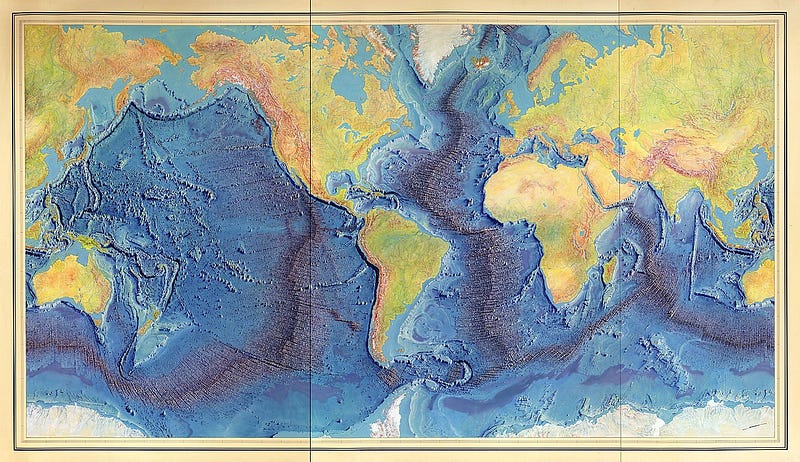The Global Slowdown of Seafloor Spreading: A New Perspective
Written on
Understanding Seafloor Dynamics
Recent studies have delved into the rates of seafloor spreading over a span of 19 million years, revealing a significant global slowdown. This phenomenon isn't merely a narrative of climate change; rather, it underscores the natural processes of our planet.

The Mid-Ocean Ridge and Plate Tectonics
Plate tectonics is a fundamental force shaping our Earth, and it's a process beyond human influence. Interestingly, this theory emerged relatively recently, evolving even while I was in school. However, our understanding of plate tectonics remains incomplete, especially with the newfound revelation that seafloor spreading is decelerating.
Seafloor spreading refers to the movement of tectonic plates apart in oceanic regions, which leads to the thinning of crustal rocks and the rise of molten mantle material. For instance, at the Mid-Atlantic Ridge, this activity generates new rock formations that push the European and North American plates apart. Concurrently, on the opposite side of the globe, the forces from this process lead to subduction along the Pacific Rim, where existing rocks are thrust into the mantle, effectively being destroyed.
The Dynamics of Plate Interactions
This ongoing interaction of plates ensures that our planet maintains a consistent size, as older rocks are recycled into new ones, resulting in a fragmented history of Earth's geological timeline. Furthermore, the processes of destruction and creation are closely tied to volcanic activity, which influences other planetary elements such as sea levels, carbon cycles, and atmospheric greenhouse gases.
Recent Findings on Spreading Rates
A study published in Geophysical Research Letters investigates the changes in seafloor spreading rates over the last 19 million years and explores potential causes. The research indicates that the spreading rate peaked approximately 15 million years ago at about 200 millimeters per year, but has since decreased by nearly 100 millimeters over the studied period. The analysis covered eighteen ridges worldwide, with the most significant decline occurring in the eastern Pacific. Overall, the average global rate of seafloor spreading has dropped by approximately 40%.
Potential Causes of the Slowdown
One hypothesis for this decline points to subduction zones. For example, the Andes mountains, formed by subduction off the South American coast, continue to grow through volcanic activity. This growth exerts pressure on the crust, making subduction increasingly challenging. Colleen Dalton, the lead author, likens it to heightened friction between colliding tectonic plates. Consequently, a slowdown in convergence at these zones could lead to a corresponding slowdown in spreading at adjacent ridges.
However, Dalton emphasizes that friction alone cannot account for the global slowdown, as mountain growth is a localized phenomenon, while the observed decline is widespread. It is possible that mantle convection processes may also be influencing these changes. Dalton aims to gather additional data to better understand the complete picture of plate speeds and their underlying causes.
Further Reading
- AGU press release
- “Evidence for a Global Slowdown in Seafloor Spreading Since 15 Ma,” Colleen A. Dalton, Douglas S. Wilson, and Timothy D. Herbert, 2022 March 25, Geophysical Research Letters
This narrative was crafted for the Daily Space podcast/YouTube series. For more updates from myself, Dr. Pamela Gay, and Erik Madaus, visit DailySpace.org.